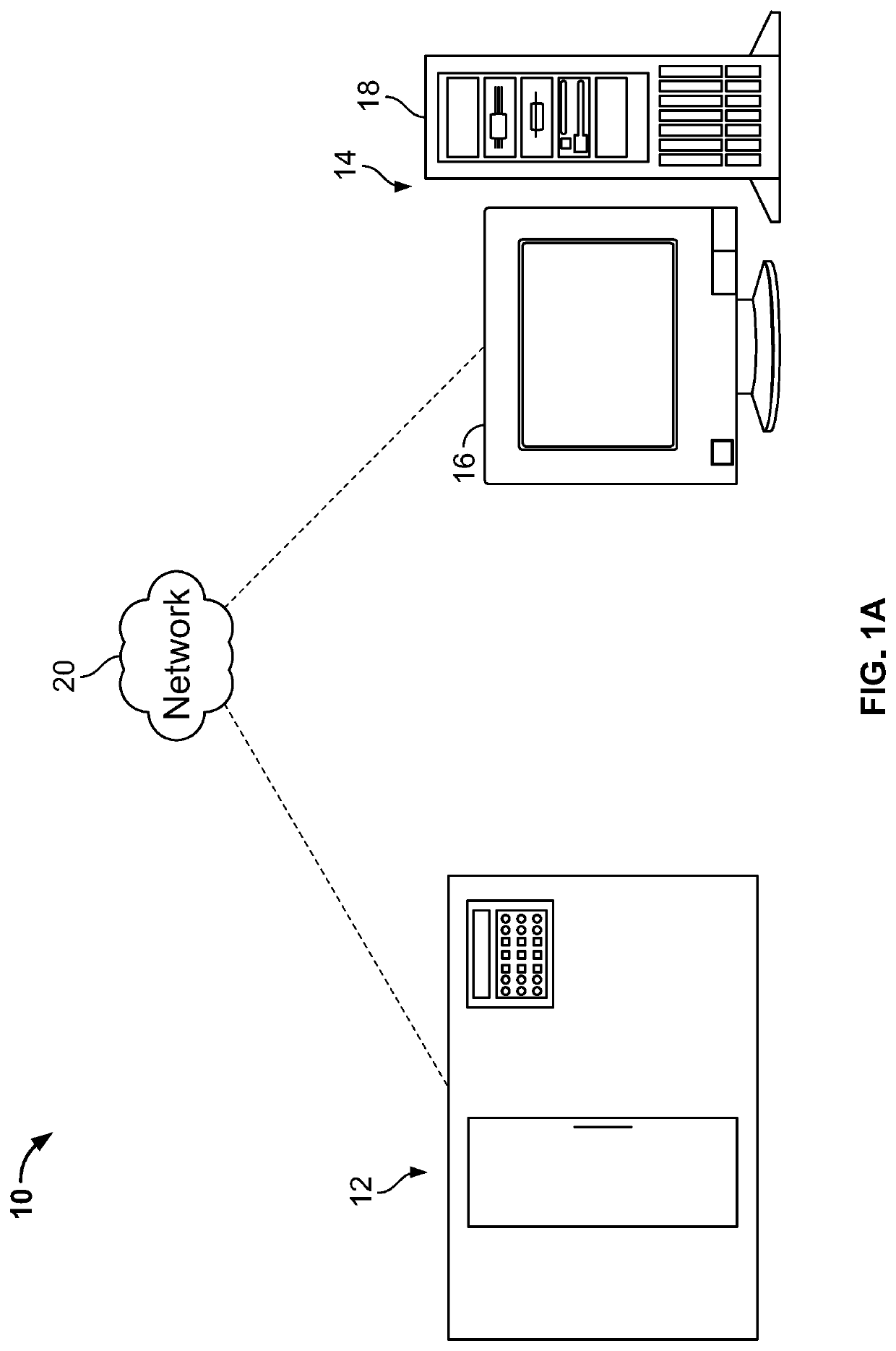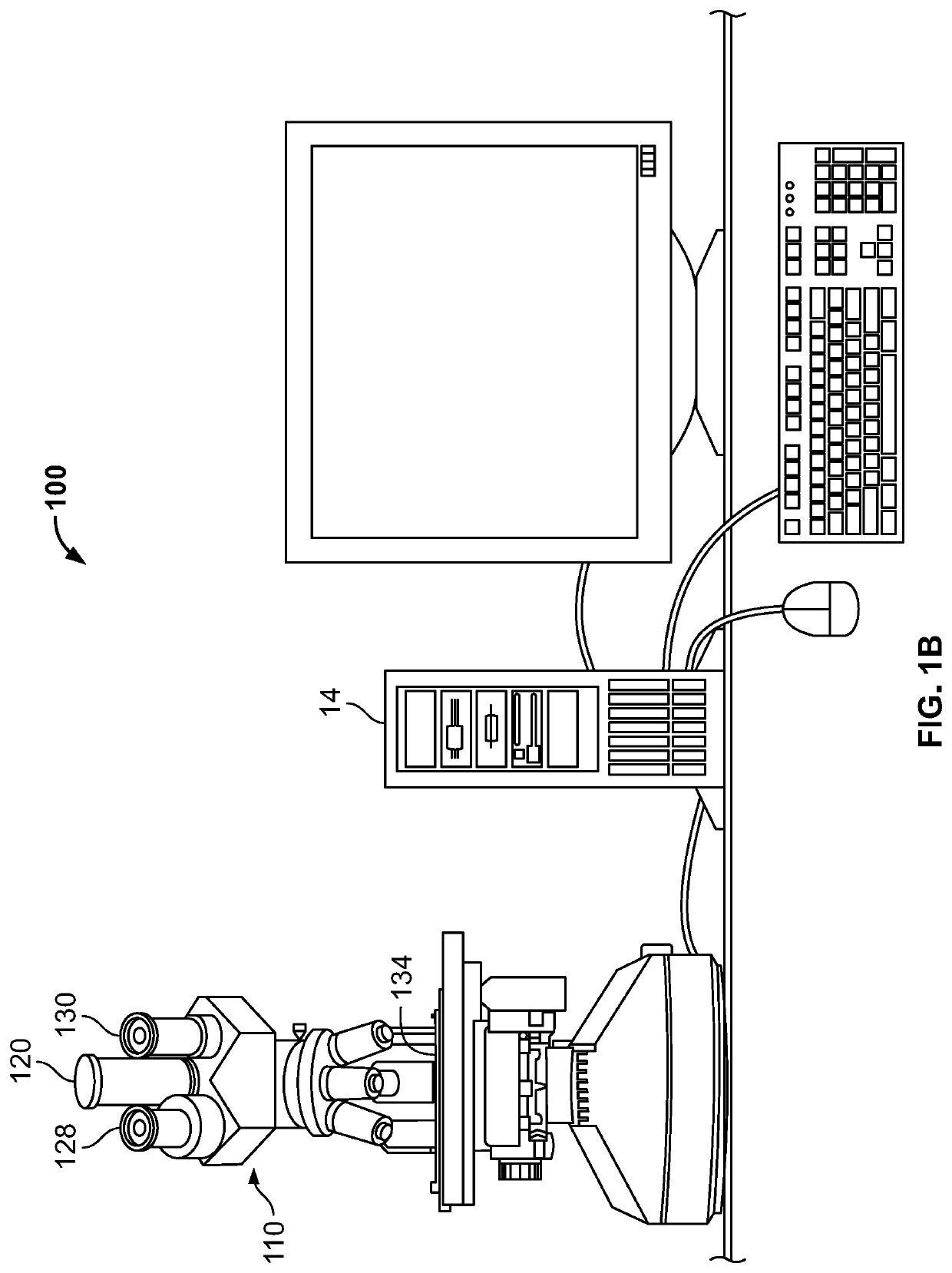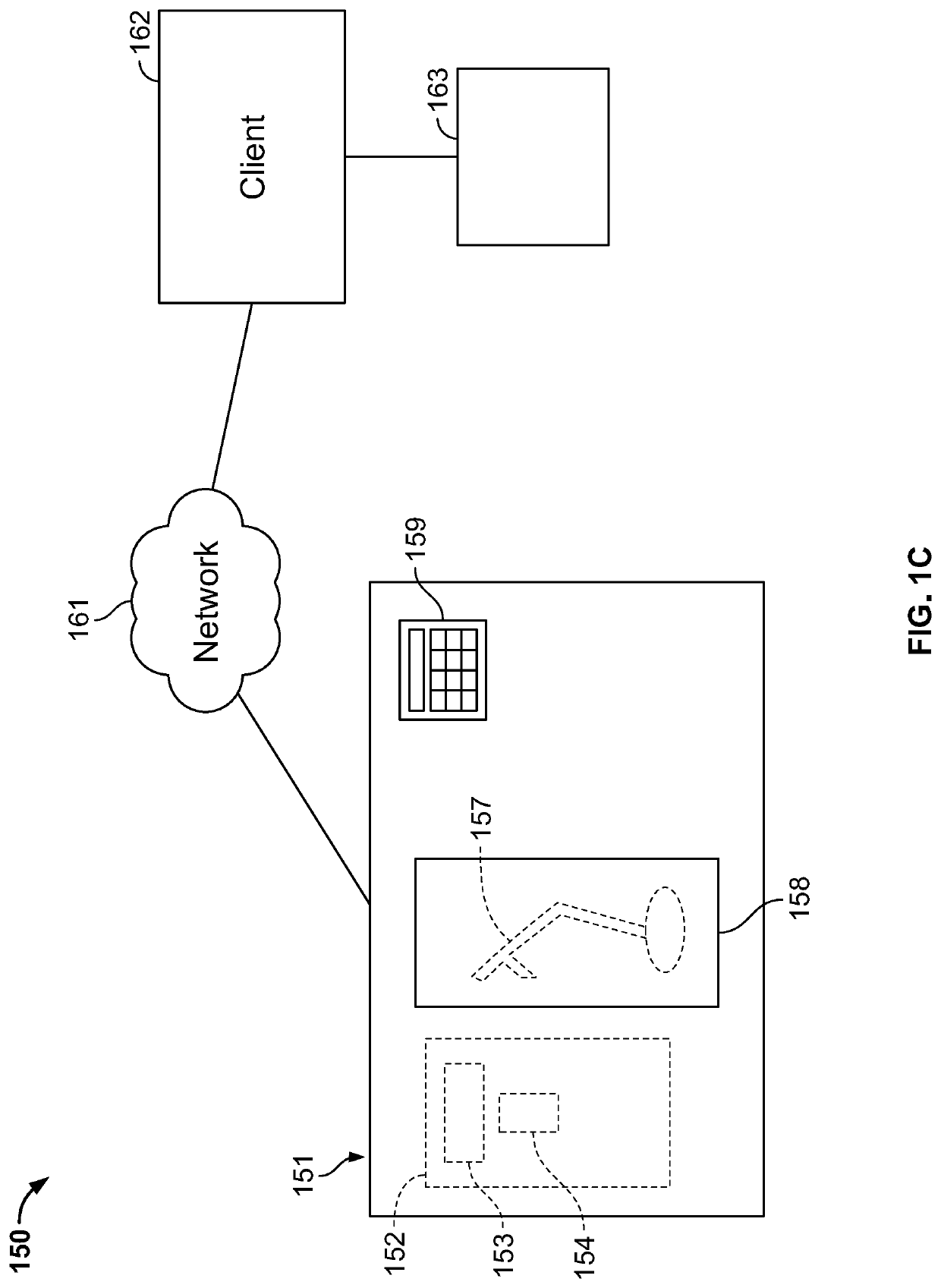System level calibration
a system level and calibration technology, applied in the field of system level calibration, can solve the problems of inhibiting the ability to conduct image analysis downstream, continuing accumulation of sources of variability, etc., and achieves the effects of reducing variability, facilitating standardized image acquisition, and greater accuracy and reproducibility
- Summary
- Abstract
- Description
- Claims
- Application Information
AI Technical Summary
Benefits of technology
Problems solved by technology
Method used
Image
Examples
embodiment 1
Additional Embodiment 1
[0163]A method of imaging a biological sample stained with one or more stains, each stain identifying a particular target within the biological sample, comprising:[0164]setting a first power output of a light source for a first channel such that a first predetermined power value is reached;[0165]adjusting a first exposure time of a camera to yield a first target intensity at the first predetermined power value for the first channel;[0166]acquiring a first image of the biological sample in a first channel based on the adjusted first exposure time; and[0167]adjusting pixel data in the first acquired image based on a first derived image correction factor specific to one of the one or more stains within the first channel.
embodiment 2
Additional Embodiment 2
[0168]The method of additional embodiment 1, wherein the first power output level for the light source is derived from preexisting calibration data for the first channel.
embodiment 3
Additional Embodiment 3
[0169]The method of additional embodiment 2, wherein the preexisting calibration data is a calibration curve of power output versus measured power.
PUM
| Property | Measurement | Unit |
|---|---|---|
| time | aaaaa | aaaaa |
| power | aaaaa | aaaaa |
| time | aaaaa | aaaaa |
Abstract
Description
Claims
Application Information
 Login to View More
Login to View More - R&D
- Intellectual Property
- Life Sciences
- Materials
- Tech Scout
- Unparalleled Data Quality
- Higher Quality Content
- 60% Fewer Hallucinations
Browse by: Latest US Patents, China's latest patents, Technical Efficacy Thesaurus, Application Domain, Technology Topic, Popular Technical Reports.
© 2025 PatSnap. All rights reserved.Legal|Privacy policy|Modern Slavery Act Transparency Statement|Sitemap|About US| Contact US: help@patsnap.com



